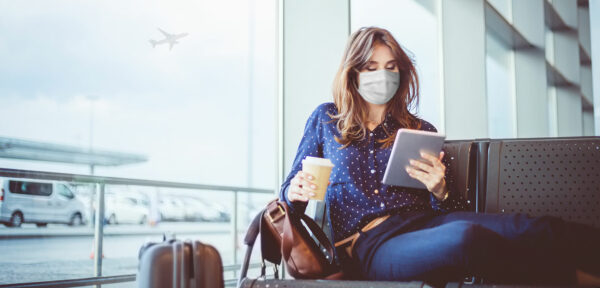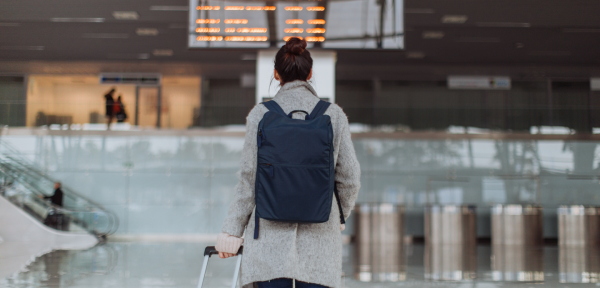Vaccine Handling, COVID-19 Containment and Aviation’s Continued Recovery Dominate the Headlines
Project Sunrays Joint Task Force
With so much riding on the efficient handling and distribution of COVID-19 vaccines, the aviation industry is taking all measures to ensure the optimum processes. Recently, TIACA and Pharma.Aero collaborated to create best practices for the handling and transporting of COVID-19 vaccines by air. In the second jointly-released report, the high-value and time- and temperature-sensitivity of these vaccines were reinforced along with the important role of the air cargo community in facilitating vaccine-related efforts. The TIACA/Pharma.Aero second Project Sunrays global readiness survey revealed that those respondents most prepared for the vaccines’ distribution are those which have both dedicated teams, and which collaborate with vaccine manufacturers and their supply chain partners.
Among the members of the Project Sunrays Joint Task Force are Brussels Airport’s BRUcure Task Force, Edmonton International Airport’s CEIV Cargo Community Ready Response, Miami International Airport’s MIAVAC19 Task Force, and Singapore Chagi Airport’s Changi Ready Task Force. These and other Joint Task Force members share as their top imperatives: clear local air cargo community objectives, inclusive organized structure, equal importance with global collaboration, recognition that the first vaccines are just the beginning, and building collaboration and trust.
U.S. Airlines Cooperating with Each Other to Support Contact Tracing Measures
Competitive U.S. airlines put aside competition for cooperation recently in order to address their share concerns and goals relating to COVID-19 contact tracing measures. Specifically, Alaska Airlines, American, Delta, Hawaiian, Jet Blue, Southwest and United all have join forces and committed to asking their passengers to share contact-tracing information. This information will then be shared with the Centers for Disease Control and Prevention (CDC). International passengers bound for the U.S. will be asked to provide their legal name, two phone numbers, email address and U.S. destination address.
Airlines for America President and CEO Nicholas E. Calio stated, “We are hopeful that this measure, coupled with existing testing requirements for passengers flying to the U.S., will lead policymakers to lift travel restrictions so that international travel can resume, and the social and economic benefits of that travel can be realized.”
Source: https://thepointsguy.com/news/us-airlines-contact-tracing/
Waypoint 2050 Report Issued
The recent publication of the Waypoint 2050 report confirmed what many already knew. At its peak in 2020, the pandemic cause global air traffic to fall to 94% of what it was in the same period in 2019. An estimated two thirds of the world’s commercial aircraft were parked or placed in storage with travelers left stranded due to quicky-imposed government restrictions.
Also revealed in the Waypoint 2050 report were the pathways needed for the aviation industry to reduce its net CO2 emission by 50% by 2050. To set the industry on a course of decarbonization, the report cites several important measures. These include governments support of rapid scaling of new fuel types enabling aviation to transition away from fossil fuels, the development of new technologies including electric, hybrid and hydrogen aircraft along with new airframe architecture, broader collaboration between air transport, government, researchers and other industry sectors, and global cooperation to avoid further, devastating impacts of climate change.
The Waypoint 2040 report presents various scenarios (i.e., technology and operations, sustainable fuel deployment, and aggressive technology improvements) and notes also that some 50 nations are striving for net-zero emissions goals with some able to reduce air transport’s carbon footprint faster than others. Twenty airlines worldwide and 20 European airports have already committed to net zero goals by 2050.
Source: https://aviationbenefits.org/environmental-efficiency/climate-action/waypoint-2050/
APAC and Middle East Air Traffic Volume Recoveries Projected
In its latest forecast, the Airports Council International (ACI) projects that the recovery path for air traffic volumes in the Asia-Pacific and Middle Eastern region will be slow, uncertain, and marked by a diverse demand recovery pattern. That said, the World Air Traffic Forecasts 2020-2040 predicts that these regions will experience the fastest growth over the next 20 years with passenger traffic expected to grow at a compound growth rate of 5.2% and 4.7% in the Middle East and Asia-Pacific, respectively. The Middle East is projected to return to 2019 pre-pandemic passenger levels in 2024, while Asia Pacific airports are expected to reach their 2019 pre-COVID-19 levels by 2023. With respect to their air freight business, both regions are expected to realize a recovery to pre-pandemic levels. Those nations projected to experience the fastest growth from 2019 through 2040 include Saudi Arabia, the United Arab Emirates, Iran, Indonesia, India, Vietnam, the Philippines, and China.
Source: https://www.internationalairportreview.com/news/151418/aci-asia-pacific-pre-pandemic-passenger-2024/





0 comments on “Aviation Wrap-Up February 2021”